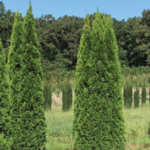What could be more important than soil? Every plant needs good soil. But what exactly is good soil? Here, you’ll learn about that, and also about mulches and soil amendments, all of which have immediate and lasting benefits.
Good soils contain plenty of nutrients to keep plants growing, but a good soil isn’t too rich, because that could burn the plant’s roots. Depending on the situation, you may need soil with a lot of drainage or the other way around. A good soil also doesn’t compact too much, because compacted soil is harder for roots to grow through.
You can always make good soil yourself through composting and other good practices, but if you’re not experienced with that, it will take a lot of time and guesswork. So, if you don’t have the resources to make your own, you can find a lot of high-quality soils, amendments, and mulches available to improve your soil.
One type of soil you’ll find on the market is potting soil. This type of soil is specialized to work effectively in containers or pots. It is formulated to enhance root development and provide efficient drainage without becoming compacted. Potting soil is good for planting in containers or pots, but not the best for plants that are put right into the ground.
On to soil amendments and mulches. While these are both additives to raw soil, amendments are mixed into the soil, while mulches are spread on top, similarly to how cinnamon might be mixed into a bread’s dough while jam is spread on the top. Both of these improve our figurative bread in different ways, and the same goes for soil, mulches and amendments.
Many raw soils aren’t very good for planting without some help. For instance, clay soils are very compact, and sandy soils lose water quickly. Amendments can solve both of these problems.
Mulching helps to retain water and keep down weed growth. Any weed seeds that would be germinating when you put the mulch down will fail to, with the mulch blocking their sunlight. New seeds will happily germinate on the mulch, but these can easily be tugged out and tossed away.
Don’t expect your plants to like your raw soil. Especially when plants are getting established, they need good soil. So look for a soil amendment that fits your situation and mix it in. Add some fertilizer depending on the plant. Then add some mulch to keep the weeds down and the ground hydrated. And watch your plant thrive!





Recent Comments